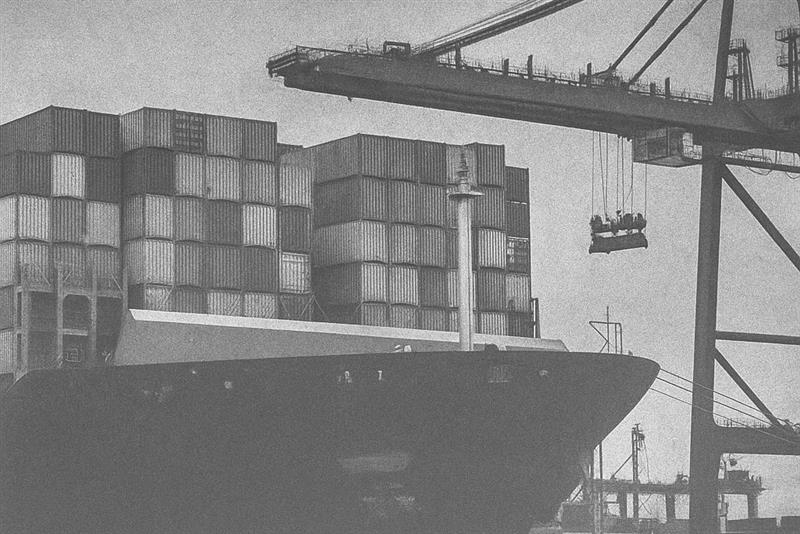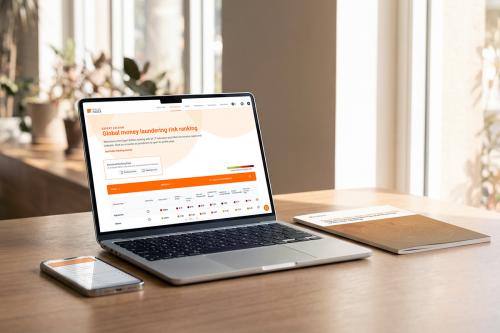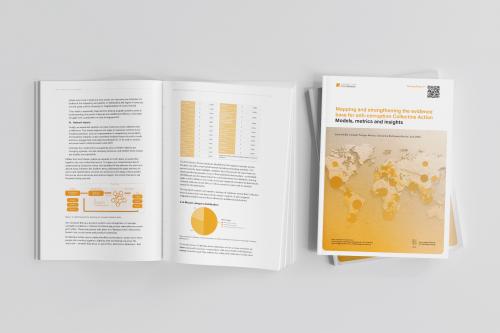How corruption helps drug traffickers adapt to strengthened border enforcement

Corruption at border points remains a pressing global issue, threatening not only border integrity but also the health, safety and security of our societies. It enables illicit trafficking, facilitates organised crime and undermines trust in public institutions.
In our Working Paper 58, Saba Kassa and Jacopo Costa examine how corruption facilitates drug trafficking through the port of Rotterdam.
Through in-depth interviews with stakeholders, a review of judicial cases and desk research, the paper shows how trafficking and corruption strategies are changing in response to strengthened enforcement at border spaces.
It contributes to the growing body of work that looks at corruption from a systemic viewpoint, analysing the relationships and adaptive capabilities that allow organised crime to thrive.
The Working Paper was written as part of the FALCON (Fight Against Large-scale Corruption and Organised Crime Networks) project. The research supports efforts to develop more robust and forward-looking approaches to combat corruption and drug trafficking.
Read the executive summary below.
Unintended consequences of strengthened enforcement
This Working Paper examines how corruption facilitates drug trafficking (specifically cocaine) through the port of Rotterdam, looking at the underlying drivers and strategies involved.
Legal trade routes and commercial ports are especially attractive because of the high volumes of cargo, which make it possible to conceal illicit cargo under licit cargo. The spatial complexity of the port of Rotterdam also makes it difficult to fully secure it against criminal activity.
Digging deeper into the facilitating factors of trafficking, the paper finds that, paradoxically, a main driver of rising border corruption is the increased political attention on and resources dedicated to fighting trafficking.
Desk research and stakeholder interviews highlight that as authorities deploy new technology to improve detection, traffickers face more obstacles to operating effectively.
Having someone on the inside then becomes increasingly important. So, an unintended but important consequence of the strengthened fight against drug trafficking is that corruption becomes even more essential for the operational success of organised crime networks.
Customs officials are specifically vulnerable
This study focuses specifically on the role of customs. Tasked with monitoring the import and export of goods, customs officers are important actors in the fight against drug trafficking. However, their role also makes them vulnerable: they have crucial knowledge on processes and procedures, access to systems and discretionary power that can be exploited by criminals.
The desk research shows that corruption is used strategically to circumvent two important bottlenecks: the container screening and security as cargo enters the port, and the exit of drugs from the port. Traffickers may seek to obtain key information or direct assistance from customs officers.
Collusion – coercion – infiltration
These corrupt relationships and the emerging networks between members of crime groups and the customs officials are diverse. Some relationships can be characterised by collusion, where customs officials offer their services or are persuaded to cooperate. This collusion may be opportunistic or targeted.
Other relationships can be characterised by coercion. Customs officials may be lured by financial reward, but this is accompanied by intimidation or the threat of violence to ensure that the officer cooperates and continues to cooperate. Our research highlights that the boundary between collusion and coercion is often blurred.
Beyond collusion and coercion, we also see infiltration, which crosses the boundaries between the criminal, public and private. What emerges is less a matter of individual corruption and more akin to regulatory capture, where the public office position is held by a member of the criminal network.
The review of the judicial cases shows that bribes involved in these schemes can amount to millions. To hide and use the illicit gains, traffickers rely on money laundering, disguising its source as legitimate. They often enlist the help of family and friends, a trusted inner circle or professional specialists. They may also hide cash at home or invest it in assets and businesses in the Netherlands or abroad.
Adaptive corruption strategies
A key finding of our research is that the criminal and corruption strategies used to facilitate drug trafficking are highly adaptive. The underlying driver of this adaptability is the unchanging demand for drugs and high profitability of the crime. This pushes traffickers to adopt new strategies to overcome hurdles in supplying the demand.
Corruption strategies adapt in response to new enforcement measures. When control systems are changed and/or strengthened, corruption strategies evolve alongside them. This research identifies some key patterns:
- Stronger detection efforts increase the incentives for corruption.
- Evolving systems encourage a similar shift in corruption strategies.
- Anti-corruption and anti-trafficking measures may change the profile of those most vulnerable to being co-opted.
- The characteristics of corruption can also evolve, from collusion to coercion, to full infiltration of institutions and systems – with blurred lines in between.
Trafficking strategies evolve, too
Trafficking strategies are similarly adaptive. There have been increased efforts by the port to combat trafficking through enhanced detection and technology. This was initially reflected by increased drug seizures. But since 2024, drugs seizures have declined.
The research findings provide an explanation for this: As detection strengthens, more drug seizures are made. But what may happen, too, is a response to these new measures. As the risk of detection increases, criminals may adapt their trafficking strategies to overcome the additional hurdles, including:
- changing concealment strategies; and
- changing modes of transport and trafficking routes, including to ports outside of the Netherlands.
Red flags and risk indicators
These developments highlight the complexity in understanding the impact of stronger anti-trafficking measures on both corruption and trafficking strategies.
Trafficking and corruption are typically measured by detection, for example, by changes in the volume of drug seizures or the number of public officials caught engaging in corruption.
But the elephant in the room is that increasingly sophisticated criminal strategies can hide what is really happening. This underscores the need to continuously strengthen our ability to recognise “red flags” of corruption and trafficking. Data-driven tools and refined risk indicators are critical for understanding how crime and corruption strategies are changing.
A holistic understanding and improved foresight
The evolving nature of criminal strategies is often likened to a game of chess: enforcement makes a move, and criminal networks adapt. But what now seems to be emerging is more troubling.
When barriers to drug trafficking increase while demand remains unchanged, crime and corruption strategies adapt in ways that can deepen their impact on society, leading for example to the hardening of crime and associated violence.
This makes anticipating how crime may adapt to changing anti-corruption and anti-trafficking strategies critical. Improved foresight and scenario-building capacities will be vital in order to develop more robust enforcement efforts against drug trafficking and mitigate the negative impact on society.
A holistic approach is essential. Addressing corruption as a facilitator of drug trafficking requires a broad view of crime that focuses on understanding vulnerabilities, leveraging data and harnessing collaboration.
The risk of trafficking routes changing are high, therefore, we must use every tool at our disposal to ensure effective and sustainable enforcement efforts.
Learn more
- Download the full Working Paper 58: Corruption as a facilitator of drug trafficking in the port of Rotterdam: Drivers, strategies and implications
- View related online workshop for enforcement and research communities: Red flags at the frontier: detecting and disrupting border corruption in the EU, 23 September 2025
Acknowledgement and disclaimer
FALCON is funded under the European Union’s Horizon Europe Framework Program Grant Agreement ID 101121281. The Basel Institute on Governance, as an associated partner without the right to receive funds directly from the European Research Executive Agency, has received funding from the Swiss State Secretariat for Education, Research and Innovation (SERI). The contents of the Working Paper are the sole responsibility of the authors and do not necessarily reflect the views of the European Union, the European Research Executive Agency or SERI.





